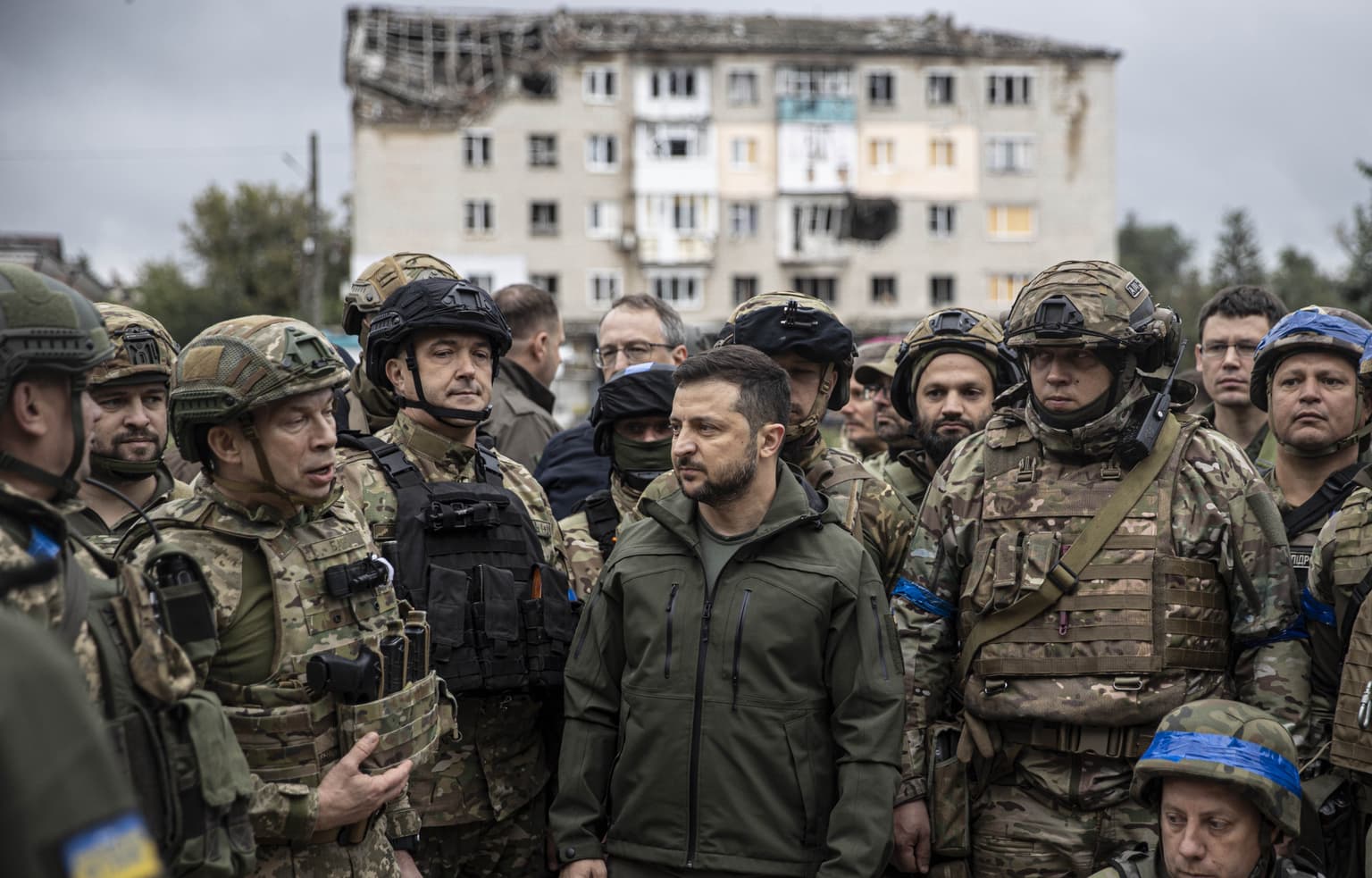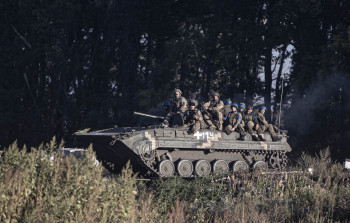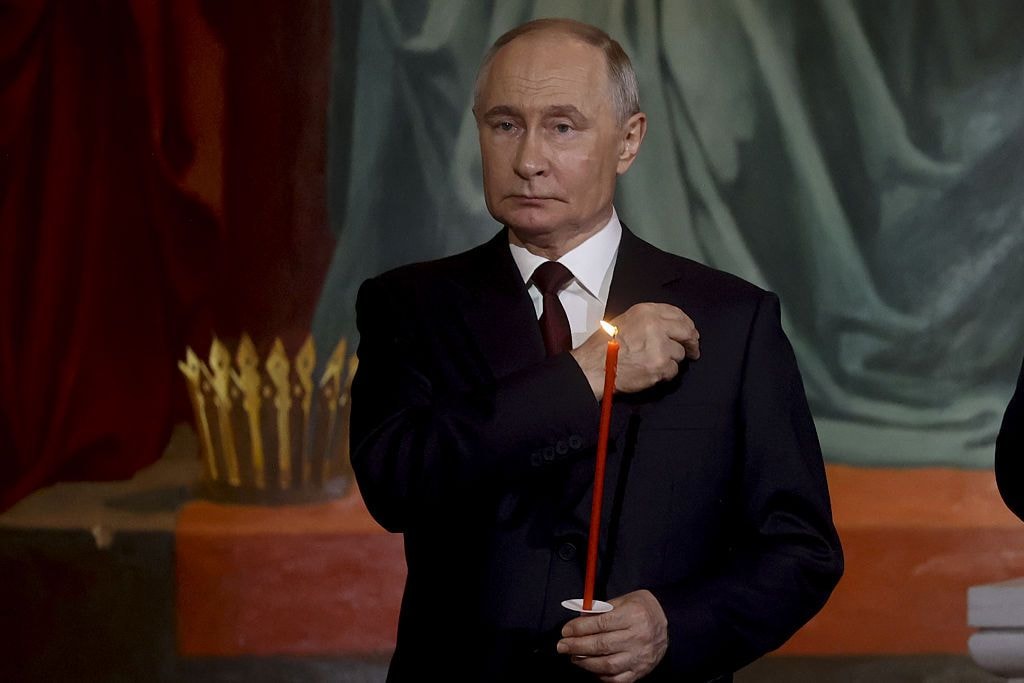Ukraine war latest: Zelensky visits liberated Izium as Ukraine reports progress in southern counteroffensive

Key developments on Sept. 14
- Zelensky visits liberated Izium in Kharkiv Oblast
- Ukraine says it is able to strike targets almost anywhere in Kherson Oblast
- Russia continues its missile strikes on critical infrastructure
President Volodymyr Zelensky made a symbolic visit to the recently liberated city of Izium on Sept. 14.
Izium, an important transportation hub in Kharkiv Oblast, was occupied by Russia in early April and liberated on Sept. 10 amid Ukraine’s surprise counteroffensive in the oblast.
According to Maksym Strelnikov, a local city council member, at least 1,000 residents have been killed in Izium since the beginning of the full-scale invasion.
Meanwhile, Ukraine continued its push to reshape the terrain of the war in the south.
Southern counteroffensive
While undershadowed by Ukraine’s recent success in Kharkiv Oblast, there seems to be progress on the southern counteroffensive.
Weeks into the operation, Ukrainian forces can now strike targets in almost the entirety of Kherson Oblast, Southern Operational Command’s spokesperson Natalia Humeniuk reported during a briefing on Sept. 14.
Humeniuk said that Ukraine’s military continues to advance in Kherson Oblast but she couldn’t disclose the recently liberated settlements. She said that in the recaptured areas, Ukraine is now focusing on “eliminating the consequences of the Russian crimes,” in particular, demining the territories.
Later in the evening, Head of Kherson Oblast Council Oleksandr Samoilenko said on TV that Ukraine had liberated Kyselivka, a village located about 25 kilometers north of Kherson, Ukraine’s ultimate target in the south.
Earlier on Sept. 12, the Southern Command reported that Ukraine’s forces had so far liberated 13 settlements in Kherson Oblast, which amounts to more than 500 square kilometers of territory.
On Sept. 12, Defense Minister Oleksii Reznikov told the Financial Times that the counteroffensive in the south is going slower than the one in the northeast since Kherson Oblast is an agricultural region “with irrigation channels” that Russian soldiers can use as defensive trenches.
Rising panic
Ukraine’s recent success appears to be causing panic among Russians in occupied territories.
In occupied Luhansk Oblast in the east of Ukraine, proxy Andrey Marochko said on the state-owned Russia-1 TV channel on Sept. 14 that the front line is getting closer, stressing that “the situation is really difficult.”
Marochko reportedly said that the front line is now only about 10 kilometers away from the Russian-occupied territories in some areas.
The exiled governor of Luhansk Oblast Serhiy Haidai said on Sept. 14 that Russia ordered the local mobile operator to shut off mobile internet for the remaining residents in the oblast due to "security reasons.”
Earlier on Sept. 13, the intelligence of Ukraine’s Defense Ministry reported that Russia’s proxies in occupied Crimea had urged their families to flee to Russia, while its military commanders and the Federal Security Service (FSB) employees had begun selling their homes in the occupied peninsula.
Also on Sept. 13, Ukraine’s General Staff reported that on the battlefield, forcibly mobilized proxy units are facing low morale.

Casualties
After a brief period of quieter days, heavy Russian shelling struck the southern city of Mykolaiv overnight, its mayor Oleksandr Sienkevych reported.
The mayor said two people were killed and three others were hospitalized after Russian forces had fired at Mykolaiv with S-300 missiles, damaging 13 residential buildings and two educational institutions in the city.
In general in Mykolaiv Oblast, a total of 410 people have been killed and over 1,000 others have sustained injuries since the start of the all-out war, the oblast’s governor Vitaliy Kim said on Sept. 14. He added that 11 of the victims killed were children.
In Dnipropetrovsk Oblast, Russian forces massed their overnight shelling on the city of Nikopol again, damaging 20 houses, gas pipelines and power lines, Dnipropetrovsk Oblast Governor Valentyn Reznichenko reported.
Later in the day, seven Russian cruise missiles hit the relatively quiet city of Kryvyi Rih in Dnipropetrovsk Oblast, causing “severe” damages to hydraulic facilities, according to Reznichenko. He said that some districts remained without water as of 8 p.m.
Shortly after the attack, Zelensky accused Russia of attempting to flood Kryvyi Rih, his hometown, in a campaign to sow panic in Ukraine.
In Donetsk Oblast, another five people were killed in the city of Bakhmut, one of Russia’s primary targets in Donetsk Oblast at the moment.












